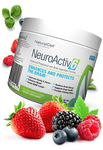A Technique to End Yo-Yo Dieting
lifestyle June 8th. 2019, 8:58amTed Striker tells Dr. Oz how the “If/Then” Technique helps him crush his food cravings.
Video Rating: / 5
Click Here to Subscribe: http://Bit.ly/ThomasVid
Get Grass-Finished Meat Delivered Directly to your Doorstep with Butcher Box: https://bit.ly/2WO1kvp
My Website: http://ThomasDeLauer.com
#1 Thing You Should Never Do When Dieting – Thomas DeLauer
Insulin Overview
Insulin is a fat storing hormone because it increases the major fat storing enzyme in the body called lipoprotein lipase (LPL)
It also decreases hormone sensitive lipase (HSL), the major fat burning enzyme, and slows fat oxidation by suppression of CPT-1 (the rate limiting step in fat burning)
So if decrease insulin, fat storage becomes slowed while fat release and burning is sped up
Other Fat Storing Hormones
Aside from insulin, there are (at least) 2 other fat storing hormones
One of them is called acylation stimulating protein (ASP) – where insulin is induced by carbs, ASP is induced by fat and both ASP and insulin stimulate the secretion of each other
So fat does stimulate insulin & insulin stimulates a fat storing helper ASP
Another storing hormone is a gut produced signaling molecule called glucose-dependent insulinotropic peptide (GIP)
GIP is induced by both carbs & fat – GIP has its own fat storing action on LPL and causes more insulin to be released
Glucose-dependent insulinotropic peptide (GIP)
Glucose-dependent insulinotropic peptide is a hormone released from the small intestine that enhances the release of insulin following the intake of food.
Glucose-dependent insulinotropic peptide is made and secreted mainly from the upper section of the small intestine from a specific type of cell known as the K cell
Its main action occurs in the pancreas where it targets beta cells, which produce insulin. Glucose-dependent insulinotropic peptide stimulates the release of insulin from the beta cells in the pancreas in order to maintain low blood sugar levels after eating.
The main trigger for glucose-dependent insulinotropic peptide release is food, in particular fatty foods or those foods that are rich in sugar.
Once released into the bloodstream, levels of glucose-dependent insulinotropic peptide do not remain high for very long. It is broken down quite quickly (after about seven minutes) and therefore does not remain in the circulating blood for long.
Acylation Stimulating Protein (ASP)
ASP is produced through a process involving three proteins: C3, factor B and adipsin, which are secreted by adipocytes – it’s an adipogenic hormone that stimulates triglyceride (TG) synthesis and glucose transport in adipocytes
ASP has a primary role in the regulation of lipid metabolism in adipocytes, where it stimulates glucose uptake, increases the activity of diacylglycerol acyltransferase, and inhibits hormone-sensitive lipase activity
In cellular studies, ASP increases fat storage through increased triglyceride synthesis and decreased intracellular lipolysis
Fats & Carbs
This means both carbs and fat cause fat gain, and when they are combined together they can result in even more
Eat carbs and you release insulin, and you also release GIP – GIP also causes the release of insulin itself
ASP is stimulated directly by fat and is stimulated indirectly by carbs because insulin stimulates ASP as well, and then ASP stimulates insulin
References
1) Ahrén B , et al. (n.d.). Acylation stimulating protein stimulates insulin secretion. – PubMed – NCBI. Retrieved from https://www.ncbi.nlm.nih.gov/pubmed/12917708
2) Metabolic response of Acylation Stimulating Protein to an oral fat load. (n.d.). Retrieved from http://www.jlr.org/content/30/11/1727
3) The worst food combination for weight loss. (n.d.). Retrieved from https://www.metaboliceffect.com/worst-food-combination-for-weight-loss/
4) You and Your Hormones. (n.d.). Retrieved from http://www.yourhormones.info/hormones/glucose-dependent-insulinotropic-peptide/
5) McIntosh CH , et al. (n.d.). Glucose-dependent insulinotropic polypeptide (Gastric Inhibitory Polypeptide; GIP). – PubMed – NCBI. Retrieved from https://www.ncbi.nlm.nih.gov/pubmed/19251046
6) Critical review of acylation-stimulating protein physiology in humans and rodents. (n.d.). Retrieved from https://www.sciencedirect.com/science/article/pii/S0005273602006867
7) Acylation-Stimulating Protein (ASP). (n.d.). Retrieved from https://www.biovendor.com/acylation-stimulating-protein
8) The effects of acylation stimulating protein supplementation VS antibody neutralization on energy expenditure in wildtype mice. (n.d.). Retrieved from https://bmcphysiol.biomedcentral.com/articles/10.1186/1472-6793-10-4
9) https://www.nature.com/articles/0802369#ref14
10) Supra-Additive Effects of Combining Fat and Carbohydrate on Food Reward. (n.d.). Retrieved from https://www.sciencedirect.com/science/article/pii/S1550413118303255
Video Rating: / 5
 Email This Post
Email This Post
Compensation Disclosure
-
This site receives compensation for referred sales of some or all mentioned products.





























































